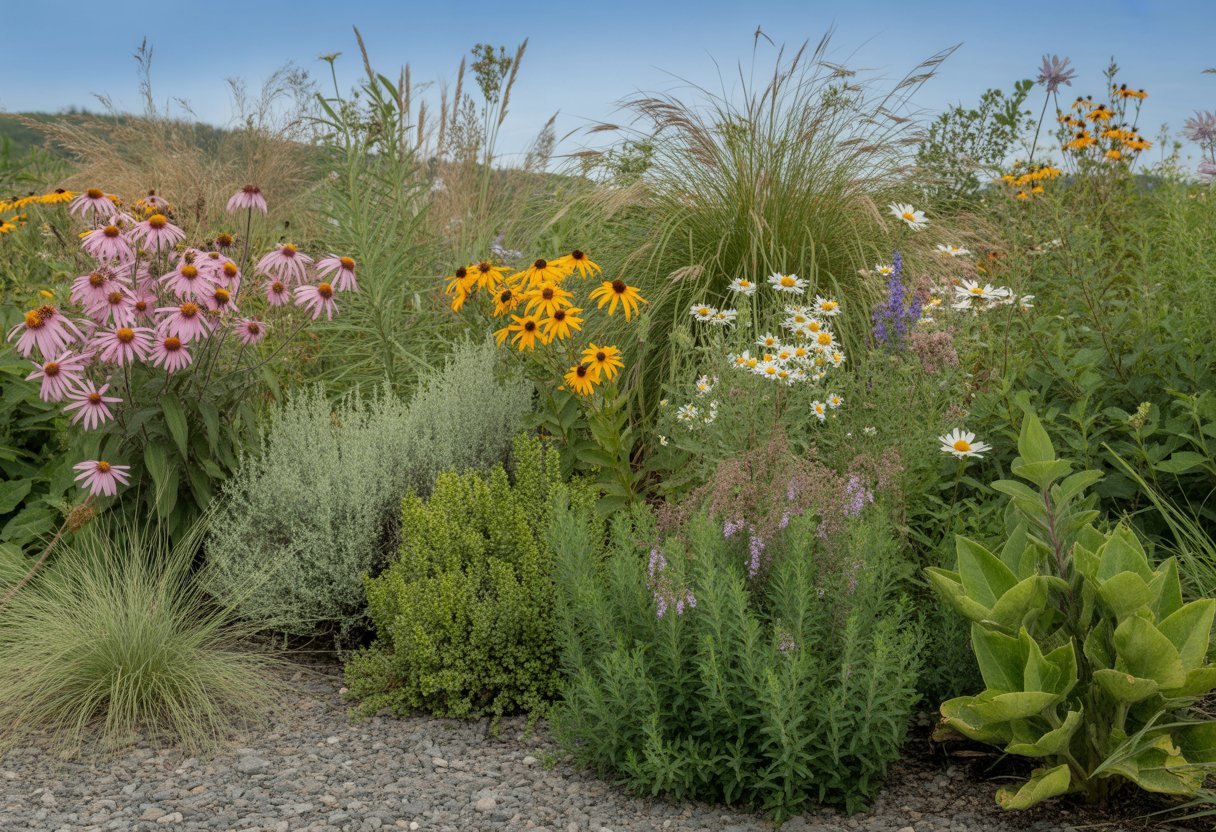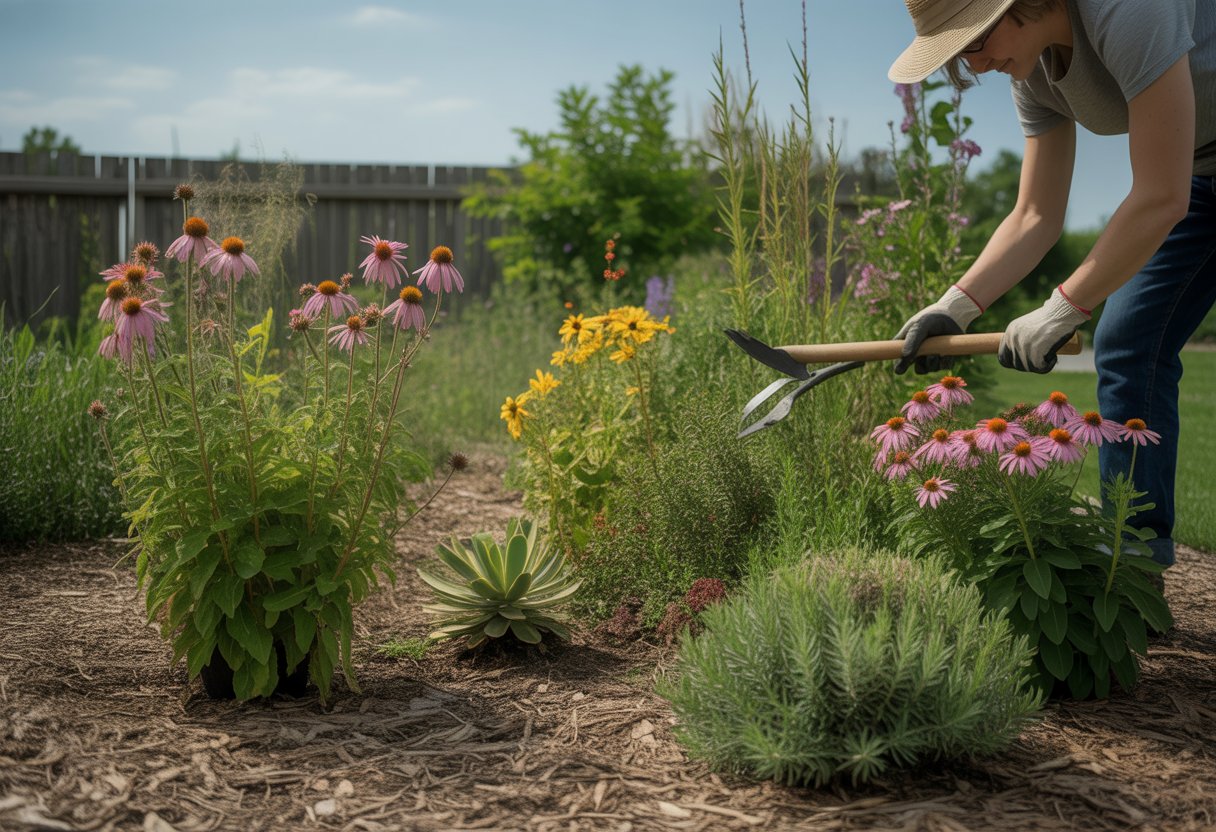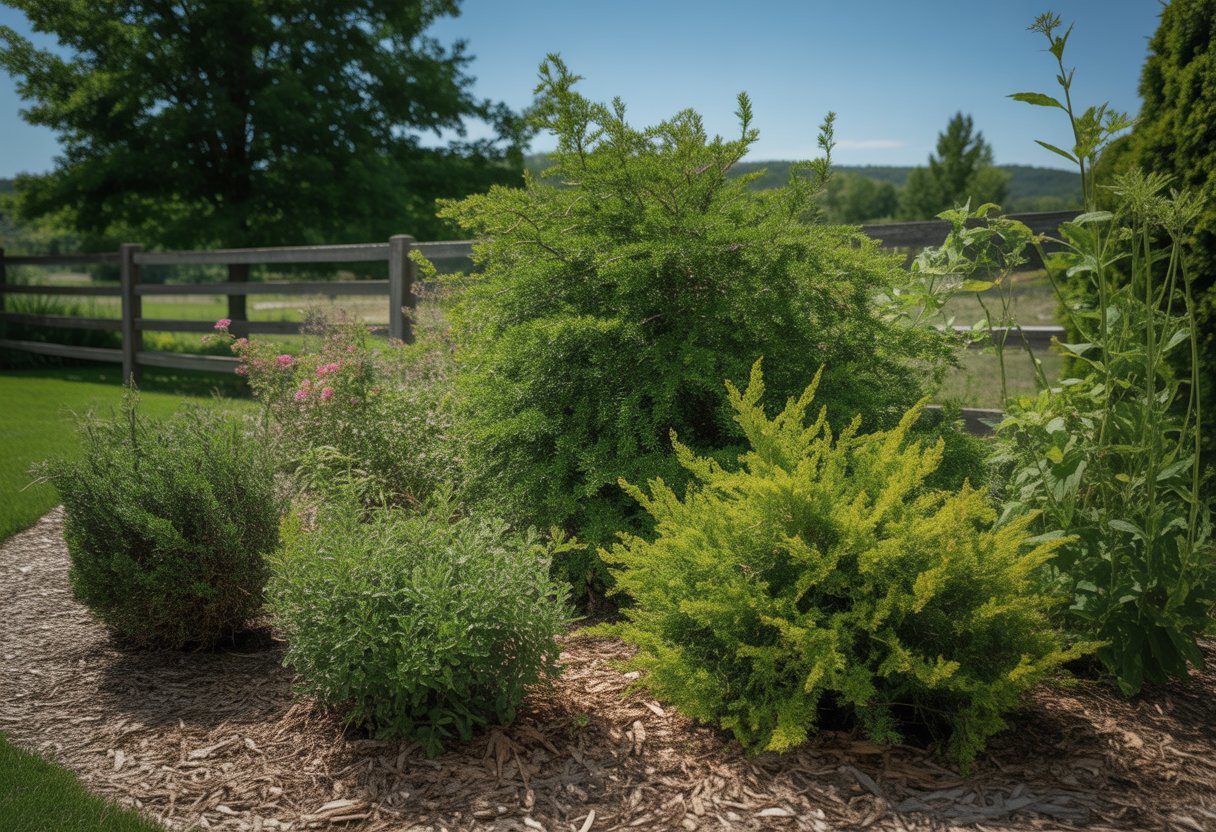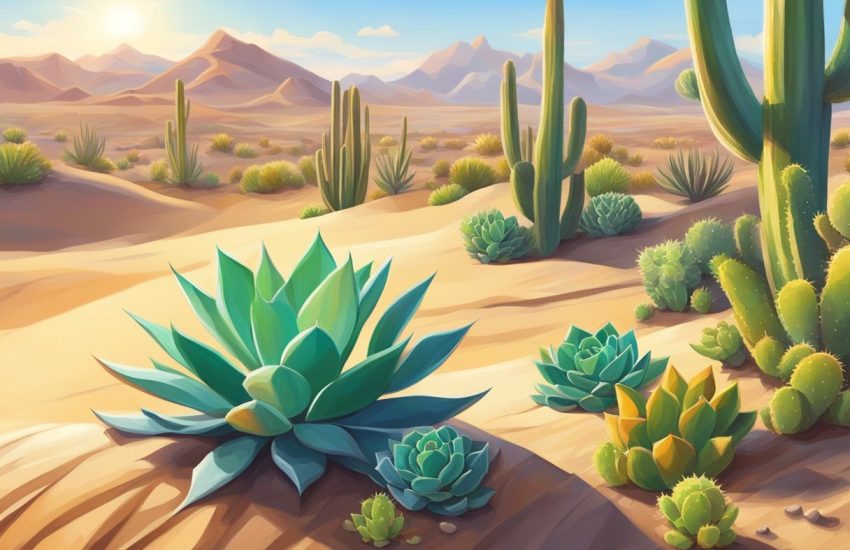Drought Tolerant Native Plants Vermont for Sustainable Landscaping and Garden Resilience
Drought tolerant native plants in Vermont can handle stretches of low rainfall without much extra watering. They’ve learned to make the most of local climate quirks, soil, and unpredictable weather—so they’re solid picks for folks aiming for sustainable landscaping.
Choosing native species that tolerate dry conditions helps conserve water and supports local ecosystems.

Many Vermont natives—think little bluestem, eastern red cedar, butterfly weed—really don’t need much moisture once they’re settled in. They’re low-maintenance and double as habitat for pollinators and wildlife.
Knowing which plants can tough it out during Vermont’s dry spells is pretty important for gardeners and land managers.
Understanding Drought Tolerant Native Plants in Vermont
Drought tolerant native plants in Vermont handle dry spells while giving back to the local ecosystem. They do best in certain soils, and you can help them out with smart placement and a layer of mulch to keep moisture in.
Defining Drought Tolerance
Drought tolerance basically means a plant can ride out dry weather without falling apart or stalling out. Vermont’s drought-tolerant species have learned to use and store water really efficiently, thanks to the region’s climate.
A lot of these plants cut down on transpiration or send roots deep to tap into hidden moisture. If you plant them in well-drained soil, they stand a much better chance during dry times.
Mulch and organic fertilizer help by keeping the soil damp and supplying nutrients.
The Importance of Native Plants for Vermont Ecosystems
Native plants evolved right here in Vermont’s Appalachian region, even along lakes and rivers. They’re essential for keeping the ecosystem in balance—offering food and shelter for local wildlife, and improving soil.
They don’t really need much extra water or chemicals. When you use native drought-tolerant plants in your yard, you’re helping save water and protect biodiversity, which matters more and more as droughts pop up.
Key Adaptations for Drought Tolerance
Some Vermont natives have woody stems that hang onto water and stay strong during dry stretches. Others show off thick or waxy leaves to slow down water loss.
Their roots often run deep or wide, so they can drink up water others can’t reach. Some even go dormant when it’s really dry, biding their time until rain comes back.
If you plant them where they get the right sun and soil, and throw down some mulch, you’ll see them bounce back from tough weather. These little tricks help them thrive even when Vermont’s climate throws a curveball.
Top Drought Tolerant Native Plants for Vermont Gardens
Vermont’s native plants that survive drought need to be tough and not too thirsty once they’re established. You’ll find shrubs, small trees, perennials, grasses, and wildflowers that make gardens both sturdy and beautiful.
Resilient Shrubs and Small Trees
Shrubs and small trees like red maple and bur oak stand out for their drought tolerance and ability to handle Vermont’s weather. Red maple brings that classic fall blaze, while bur oak loves dry soils and casts dependable shade.
Eastern redbud is another good pick, with showy spring blossoms and a fair amount of drought resistance. They need well-drained soil and can shrug off the occasional dry spell.
They also give local wildlife a boost and can act as windbreaks or privacy screens—no need for constant watering.
Ornamental Perennials and Grasses
Ornamental perennials like peonies and tree peonies are drought-tolerant once they get going. Their big, dramatic blooms are pretty hard to beat, and they’re not fussy.
Peonies like well-drained soil and can handle those hot, dry Vermont summers. Little bluestem is a native grass that brings silvery-blue blades and turns reddish in fall.
It thrives in rough, dry soils and doesn’t need much water once it’s established. Mix perennials and grasses, and you’ll get stable soil and a garden that always has something interesting going on.
Wildflowers and Pollinator-Friendly Species
Wildflowers like butterfly weed and periwinkle don’t mind dry weather and are perfect for butterfly gardens. Butterfly weed draws in monarchs and other pollinators, offering nectar all season.
Periwinkle, a low-growing groundcover, sports blue-purple flowers and helps lock in soil moisture while keeping weeds down.
Bringing these into your garden supports pollinators and builds a lively, low-water ecosystem.
Planting and Maintenance Tips for Drought Tolerant Gardens

Picking the right spot, prepping the soil, and managing water smartly all matter when you’re planting drought tolerant native species. Paying attention to sunlight, nutrients, and moisture really boosts plant success and makes your life easier.
Best Placement and Sunlight Requirements
Most drought tolerant natives in Vermont want full sun—at least six hours straight each day. They do best on south or west-facing slopes, soaking up as much sun as possible.
Skip the low spots that get soggy. Instead, plant in well-drained spots so roots won’t rot.
If you’re working on rain gardens or fighting erosion, pick natives that can handle the occasional wet spell but still survive when things dry out.
If you’re starting from seed, stratification (giving seeds a cold, moist period) helps them sprout, especially in chilly Vermont.
Soil Preparation and Fertilizing Techniques
Aim for well-draining soil, and mix in compost to boost structure and nutrients. Heavy clay soils need help—otherwise, they’ll drown the roots.
Go easy on fertilizer, especially nitrogen. Too much, and you’ll just get leafy growth that drinks up more water.
Most drought tolerant natives don’t need much feeding after they’re established. Add compost when planting to kickstart soil health and hold onto moisture.
Water Conservation and Mulching Practices
A 2-3 inch layer of mulch around your plants keeps soil moist and temperatures steady. Organic mulches—shredded bark or leaf mold—break down slowly and feed the soil.
Mulch also fights weeds, so your plants don’t have to compete for water. Don’t pile mulch against stems, though, or you’ll risk rot.
Water deeply but not often during the first season to encourage deep roots. Once they’re settled, native plants barely need any extra watering.
Rain gardens that collect runoff can keep things moist and cut down on erosion. Mulch and smart placement go a long way toward saving water in a drought-tolerant garden.
Managing Garden Health and Environmental Impact

Keeping drought-tolerant natives healthy in Vermont means staying on top of pests, diseases, and protecting local waterways. Good garden habits also help prevent erosion and support the area’s natural biodiversity.
Preventing and Managing Pests and Diseases
Native plants in Vermont usually fend off most pests and diseases, but you still need to keep an eye out. Regularly check for leaf damage, discoloration, or weird growth—catching problems early makes a difference.
If you spot pests, try picking them off or pruning affected branches. When you need to, insecticidal soaps or neem oil work better than harsh chemicals and won’t harm the good bugs.
Healthy soil from compost and mulching keeps plants strong. Don’t overwater—dampness invites fungal problems.
Ground covers and mulch help keep soil in place and make it tougher for diseases to take hold.
Supporting Vermont’s Lakes, Rivers, and Biodiversity
When you use Vermont native plants, you help cut down on runoff and erosion. That means lakes and rivers nearby get less sediment and fewer nutrients dumped into them.
Those deep roots really dig in, keeping soil in place and blocking pollutants from reaching the water. It’s a simple trick, but it works wonders.
If you pick plants that can handle a dry spell, you won’t need to water as much. Less irrigation means you’re not pulling as much water from streams or ponds.
That’s big for the fish and all the other aquatic life that depend on steady water levels. It’s easy to overlook, but every drop counts.
Native plants also create homes and food for insects, birds, and mammals that keep Vermont’s biodiversity humming along. When you mix in a variety of species, you’re basically rolling out the welcome mat for a balanced ecosystem.
You even get a bonus: natural pest control, courtesy of all those critters. It’s one less thing to worry about.
Honestly, waterwise landscaping with erosion control does more than just look good. Native gardens end up as a surprisingly powerful tool for protecting Vermont’s environment.


